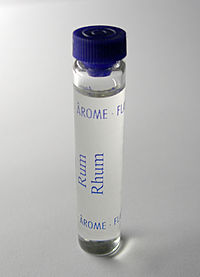
Photo from wikipedia
Safrole, a phenylpropene with a ‘candy shop’ aroma, is abundant in nature among diverse plant genera such as Sassafras, Ocotea, Cinnamomum, Myristica, and Piper. Sassafras oil has been used extensively… Click to show full abstract
Safrole, a phenylpropene with a ‘candy shop’ aroma, is abundant in nature among diverse plant genera such as Sassafras, Ocotea, Cinnamomum, Myristica, and Piper. Sassafras oil has been used extensively for a long time, first by Native Americans and later by European settlers in traditional medicine and as a flavouring agent. Until 1960 the consumption of safrole by the western population, as a flavouring agent in beer, meat, and soft drinks, was unregulated. Later, the recognition of this phytochemical as a weak hepatocarcinogen with demonstrated genotoxicity in rodents led to strict restrictions on its use in food by various regulatory bodies globally. Moreover, in Asian countries oral carcinogenesis has been linked to safrole through the habit of chewing betel quid. As a separate issue, safrole is an inexpensive synthetic precursor to the illicit recreational drug Ecstasy. Accelerating demand for this party drug during the last few decades has encouraged the unscientific harvesting, illegal production, and trading of safrole‐rich oils, leading to massive deforestation. Recently, many government authorities have enforced laws to restrict the production and harvesting of safrole‐bearing plants. Thus, the identity of safrole has altered with time from a pleasant flavouring agent to a hepatocarcinogen, and more recently as a driver of the destruction of biodiversity. Law enforcement has not only hampered its availability but has also extensively affected industrial use. Our review describes the research progress (1960–2018) on its natural distribution, carcinogenicity, usage as a natural synthon, and the regulations imposed on safrole and safrole‐rich oils worldwide. Finally, we draw our readers’ attention to the sustainable use of this phytochemical for a better future.
Journal Title: Flavour and Fragrance Journal
Year Published: 2019
Link to full text (if available)
Share on Social Media: Sign Up to like & get
recommendations!